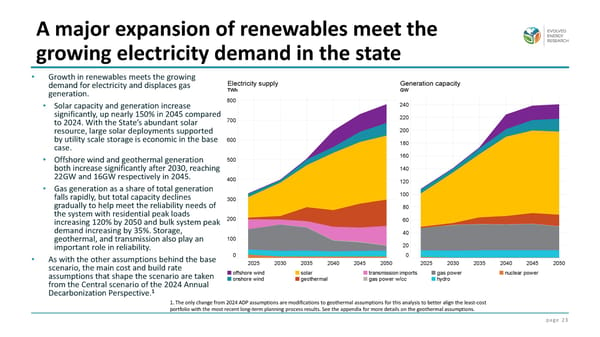page 23 • Growth in renewables meets the growing demand for electricity and displaces gas generation. • Solar capacity and generation increase significantly, up nearly 150% in 2045 compared to 2024. With the State’s abundant solar resource, large solar deployments supported by utility scale storage is economic in the base case. • Offshore wind and geothermal generation both increase significantly after 2030, reaching 22GW and 16GW respectively in 2045. • Gas generation as a share of total generation falls rapidly, but total capacity declines gradually to help meet the reliability needs of the system with residential peak loads increasing 120% by 2050 and bulk system peak demand increasing by 35%. Storage, geothermal, and transmission also play an important role in reliability. • As with the other assumptions behind the base scenario, the main cost and build rate assumptions that shape the scenario are taken from the Central scenario of the 2024 Annual Decarbonization Perspective.1 A major expansion of renewables meet the growing electricity demand in the state 1. The only change from 2024 ADP assumptions are modifications to geothermal assumptions for this analysis to better align the least-cost portfolio with the most recent long-term planning process results. See the appendix for more details on the geothermal assumptions.
 Exploring the Value of Vehicle to Grid (V2G) for California Page 22 Page 24
Exploring the Value of Vehicle to Grid (V2G) for California Page 22 Page 24